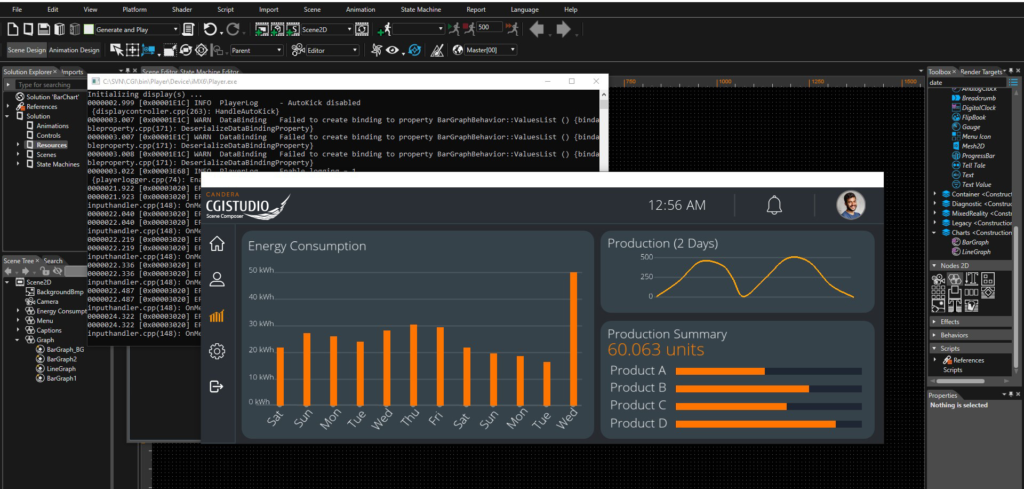HMI design tool developer Candera has released the latest version, 3.11, of its software package CGI Studio.
According to the company, new features include an improved user interface, the ability to import graphics directly from Adobe XD using the program’s Smart Importer function, accompanying documentation to help integrate CGI Studio 3.11 into an automotive cybersecurity environment according to the ISO/SAE 21434 standard, and a new extended control set to speed up HMI creation.
“Winning the Car HMI Europe Award for our Smart Importer in 2021 gave us confidence that we are on the right path with Smart Importer and made us even more determined to push the boundaries of what can be done with it,” said Reinhard Füricht, CEO of Candera.
Based on AI-detection technologies, the Smart Importer accelerates the HMI creation process by facilitating direct import of a design file while adding functionality automatically. Users can import graphics files into CGI Studio from Adobe Photoshop, Sketch, Axure RP, and now also Adobe XD. Relevant components such as gauges, sliders and buttons are then automatically detected, and the proper functionality can be added to each element.
With version 3.11, Candera is also looking to support automotive OEMs and Tier 1s in the successful integration of CGI Studio into their cybersecurity-related HMI applications. To this end, documentation is provided with 3.11 to guide cybersecurity experts through the recommended way of integrating CGI Studio as an off-the-shelf product (according to ISO/SAE 21434 chapter 6.4.6). It introduces the available configuration options for an ISO/SAE 21434 cybersecurity software stack, and lists known vulnerabilities related to the product as well as to the various third party and open-source software (OSS) components. A CVSS v3.0 vulnerability report is also attached to support Threat Analysis and Risk Assessment (TARA).
Other updates include the addition of easily implementable bar graphs and line graphs. Furthermore, hardware support has also been expanded to include NXP Semiconductors’ i.MX 8M Nano Applications Processor and STMicroelectronics’ STM32MP1.




